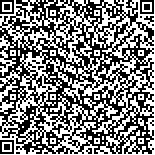|
| 引用本文: | 杨胜龙,史慧敏,张胜茂,张涵,费英杰,王斐,金卫国,王国来,樊伟.基于BiLSTM模型的远洋渔船类型识别研究[J].海洋科学,2022,46(3):25-35. |
| |
|
| |
|
|
| 本文已被:浏览 1065次 下载 830次 |

码上扫一扫! |
|
|
| 基于BiLSTM模型的远洋渔船类型识别研究 |
|
杨胜龙,史慧敏,张胜茂,张涵,费英杰,王斐,金卫国,王国来,樊伟
|
|
1.中国水产科学研究院 东海水产研究所, 农业农村部远洋与极地渔业创新重点实验室, 上海 200090;2.中国水产科学研究院 渔业资源与遥感信息技术重点开放实验室, 上海 200090;3.上海海洋大学 信息学院, 上海 201306;4.上海理工大学 理学院, 上海 200093;5.上海开创远洋渔业有限公司, 上海 200082
|
|
| 摘要: |
| 船舶自动识别系统(Automatic identification system,AIS)为渔业资源和渔船捕捞活动管理和研究提供了可能。明确船舶作业类型是开展AIS信息渔业研究应用前提,为渔业研究和管理提供渔船捕捞类型基础数据支撑,保障渔船作业安全和监督非法捕捞渔业活动,作者通过搜集整理3 000多艘已知类型船舶信息,从空间、时间和行为等多方面挖掘17种船舶特征参数,采用三层双向长短期记忆网络(Bidirectional long short-term memory,BiLSTM)方法,分别构建渔船/非渔船类别识别模型和不同渔船类型识别模型。模型结果表明,渔船/非渔船的BiLSTM模型的训练数据集分类平均准确率为99.6%,平均精确率为99.8%;验证数据集分类平均准确率为93.6%,平均精确率为95.6%。渔船多分类模型训练数据集分类平均准确率为99.0%,平均精确率为99.3%;验证数据集分类平均准确率是97.0%,平均精确率是97.6%。作者构建的渔船/非渔船类别识别模型和渔船类别识别模型训练和验证精度都较高,模型具有较好的泛化能力,可用于主要捕捞类型渔船识别分类。 |
| 关键词: 渔船类别识别 船舶自动识别系统 双向长短期记忆网络 |
| DOI:10.11759/hykx20210708001 |
| 分类号:S973.1+9 |
| 基金项目:国家重点研发计划项目(2019YFD0901404,2019YFD0901405);中央级公益性科研院所基本科研业务费项目(2019T09);上海市科技创新行动计划项目(19DZ1207504);福建省海洋渔业资源与生态环境重点实验室开放基金项目(fjmfre2019003) |
|
| Pelagic fishing vessel classification using bidirectional long short-term memory networks |
|
YANG Sheng-long1,2,3, SHI Hui-min1,2,4, ZHANG Sheng-mao1,2, ZHANG Han5, FEI Ying-jie5, WANG Fei1,2, JIN Wei-guo6, WANG Guo-lai6, FAN Wei1,2,3
|
|
1.Key Laboratory of East China Sea &2.Oceanic Fishery Resources Exploitation and Utilization, Ministry of Agriculture, Chinese Academy of Fishery Sciences, Shanghai 200090, China;3.Key and Open Laboratory of Remote Sensing Information Technology in Fishing Resource, East China Sea Fisheries Research Institute, Chinese Academy of Fishery Sciences, Shanghai 200090, China;4.College of Information, Shanghai Ocean University, Shanghai 201306, China;5.College of Science, University of Shanghai for Science and Technology, Shanghai 200093, China;6.Shanghai Kaichuang Deep Sea Fisheries Co., Ltd, Shanghai 200082, China
|
| Abstract: |
| Automatic identification systems (AIS) information provides the possibility for the fine management and research of fishery resources and fishing activities.Existing fishery research mostly describes fishing activities of fishing vessels based on clear fishing gear AIS data.However,the fishing vessel types are often unknown in practice.Therefore,it is necessary to build a classification model of ship type to identify fishing vessels of unknown fishing type and provide data support for fishery research and management to protect the sustainable development of fishery resources.Fishing ships require a certain fishing license to operate with licensed fishing gear.Identifying specific fishing ship trajectory information such as fishing activity or gear type is also useful for monitoring illegal fishing activities.This article collected and sorted the information of 3067 known types of ships (including 4 types of fishing vessels,1831 total;3 types of nonfishing vessels,1236 total).Seventeen characteristic parameters of each vessel were extracted based on the time,latitude and longitude,ship speed and heading course derive from AIS.Seventeen characteristic parameters were used as model input variables,and a three-layer bidirectional long short-term memory BiLSTM,network was used to construct a fishing vessel/non-fishing vessel classification recognition model and recognition models for fishing vessels.The model results showed that the average accuracy rate of training data classification of the fishing/non-fishing vessel LSTM model was 99.6%,the average precision was 99.8%,the average recall was 99.5%,the average kappa coefficient was 0.992,the F1 score was 0.997,and the AUC was 0.996.The average accuracy,average precision,average recall,average kappa coefficient,F1 score and AUC for the testing data set were 93.6%,95.6%,93.8%,0.867,0.947 and 0.936,respectively.The results of the training data set of the fishing vessel classification model showed that the average accuracy was 99%,the average precision was 99.3%,the average recall was 99%,the average kappa coefficient was 0.967,the F1 score was 0.991,and the AUC was 0.98.The average accuracy rate of the validation data set classification was 97%,the average precision was 97.6%.,the average recall was 97.4%,the average kappa coefficient was 0.895,the F1 score was 0.975,and the AUC was 0.942.Two models with high performance,could help to distinguish the fishing/non-fishing vessel,and detection the gear type of fishing vessel.Furthermore to supervise the fishing activity to protect fishery ecosystems. |
| Key words: fishing ships classification AIS data BiLSTM |
|
|
|
|
|
|
